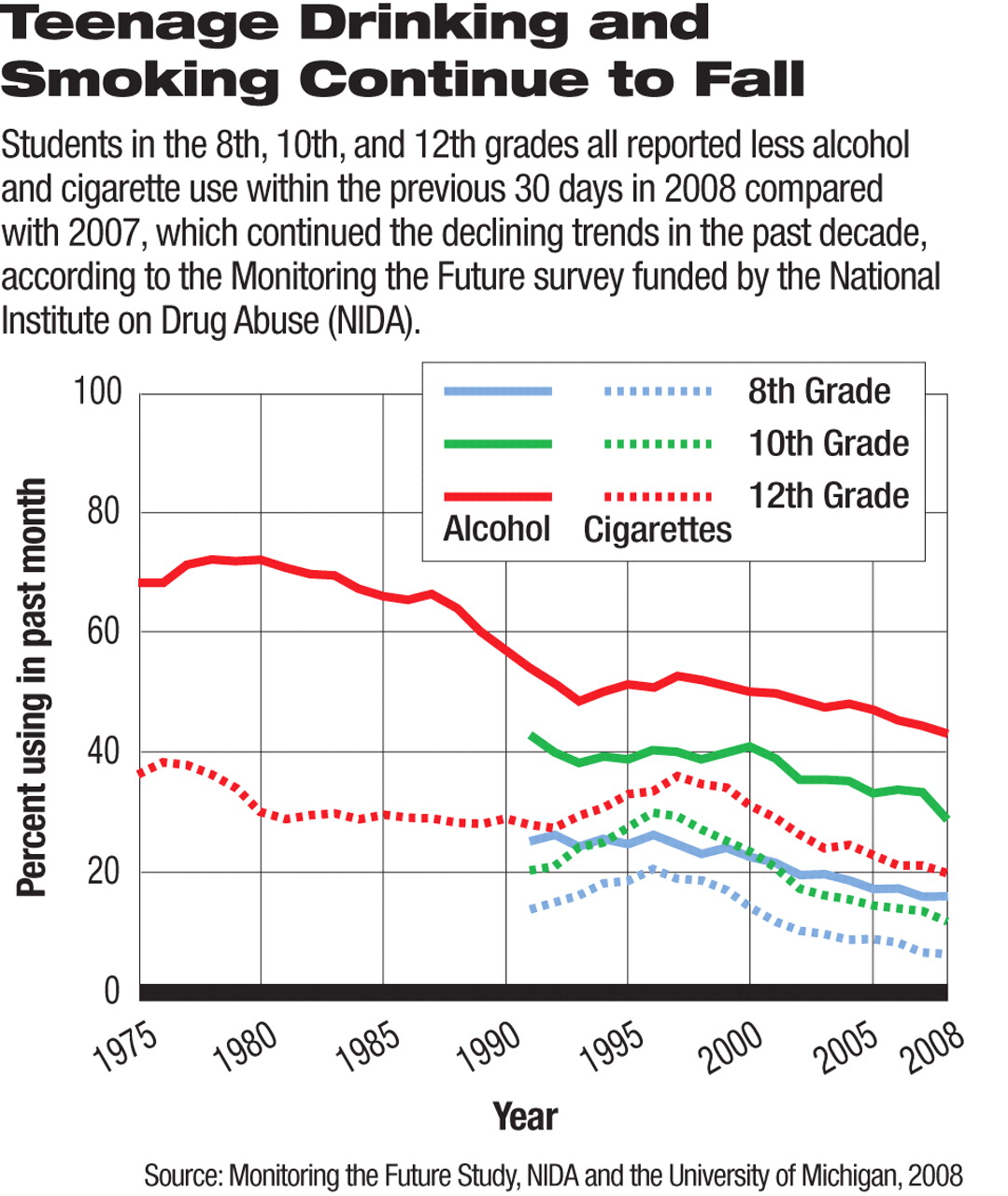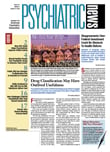Smoking, drinking, and the misuse of stimulants by teenagers have continued on downward trends that have been evident in the past decade, but other substance use trends are flattening or showing signs of increase, according to the latest data from the Monitoring the Future (MTF) survey released by the National Institute on Drug Abuse (NIDA) on December 11, 2008.
The MTF survey is funded by NIDA. It has been carried out every year since 1975 by Lloyd Johnston, Ph.D., the study's principal investigator, and colleagues at the University of Michigan's Institute for Social Research. The 2008 survey was completed by more than 46,000 eighth, 10th, and 12th graders in 386 public and private secondary schools across the United States.
The prevalence of cigarette smoking continued the decline seen since the mid-1990s and reached or nearly reached the lowest percentages on record in all three grades. In 2008, 7 percent, 12 percent, and 20 percent, respectively, of eighth, 10th, and 12th graders reported smoking in the prior 30 days.
The use of alcohol has also been decreasing steadily from its peak in the mid-1990s, albeit at a slower pace than the decline in cigarette smoking. The prevalence of prior-30-day alcohol use in 2008 was 16 percent, 29 percent, and 43 percent, respectively, in the three grades. The downward trends of alcohol use and of getting drunk in the prior 30 days were consistent with the reported decline in the availability of alcohol, especially for eighth graders. Nevertheless, 28 percent of 12th graders admitted being drunk in the prior 30 days.
In the area of substance use, “just about all the declines [in drug classes] were in stimulants,” said Johnston at a press conference. Notably, methamphetamine use has seen a steady decline since it was added to the survey questionnaire in 1999. The prevalence in 2008 was down by two-thirds compared with 1999 in all three grades. The prevalence of other forms of amphetamine use, such as crystal methamphetamine and prescription dextroamphetamine (Ritalin and generics) misuse was also down. Cocaine and crack cocaine use continued with their general decline in the past decade as well.
“These [findings] are not only good news, they are extraordinary,” said NIDA Director Nora Volkow, M.D., because adolescence is “the stage during development that the brain is more susceptible to the deleterious effects of repeated drug use.” She noted that alcohol and tobacco use is known to confer higher risk of other substance use later in life, and progress made in these areas can have a long-term effect of reduced substance use as these school-age youths grow older.
Nevertheless, several other classes of drugs showed flattening use trends in recent years after clearly declining from their peaks in the 1990s. These included LSD, other hallucinogens, ecstasy, heroin, and tranquilizers.
Misuse of prescription drugs, especially opioids, has not marked obvious decline in recent years. For example, 4.7 percent and 9.7 percent of the 12 graders reported misusing OxyContin and Vicodin, respectively; and both remained close to peak levels since the MTF survey began to measure their use in 2002.
There were signs indicating that marijuana use may be rising despite gradual decline in recent years. The prevalence of past-30-day use of marijuana was 5.8 percent, 13.8 percent, and 19.4 percent in eighth, 10th, and 12th graders, respectively, which were not statistically significantly different from 2007. The perception of risk associated with regular use fell significantly this year among eighth graders, which could signal a growing likelihood of use as this age group becomes older. “We may be at the end of the decline of marijuana use,” said Johnston.

